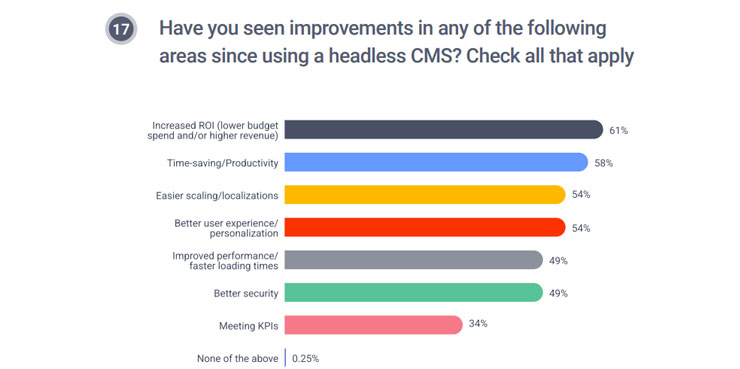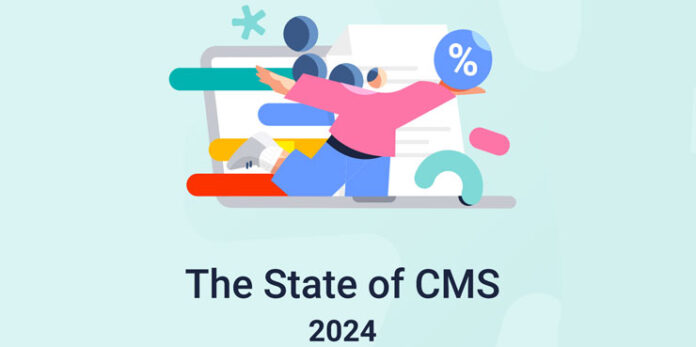Storyblok, a content management system (CMS), just released The State of CMS 2024 report to show how companies manage content today and what their content plans are for the future. As more businesses make the switch to headless CMS, they are realizing how much easier it is to manage their content.
The report details the results of a survey commissioned by Storyblok of 1,719 CMS users across the US, UK, Germany, Netherlands and Sweden.
Monolithic CMS vs. Headless CMS
Monolithic CMSs continue to hold companies back from delivering the content experiences customers expect on any channel, the report states. In fact, 81% of respondents use more than one CMS in their organization, primarily to deliver content to multiple channels.
Meanwhile, 99% of those who switched to a headless CMS report improvements that come from managing content in one central location on a modern tech stack, according to the report. The most common benefits are increased ROI (61%) and productivity improvements (58%).
Needing multiple CMSs to achieve omnichannel distribution is a monolithic problem. Thanks to the backend being tightly tied to a single frontend, monolithic systems make distributing content across multiple platforms extremely difficult. The report shows that users are turning to multiple content management solutions to achieve this functionality.
On the other hand, headless CMS is designed to excel in omnichannel delivery because it provides a flexible and decoupled architecture that separates content creation and management from the presentation layer, as stated in the report. The very design of headless removes the need for multiple CMSs. Thus, as knowledge of these capabilities increases, there might be a similar increase in the number of headless users who make the switch to achieve true omnichannel functionality.

The Benefits of Migrating
As headless CMS gains more recognition, the differences between coupled and decoupled architecture continue to get more clear. While migrating to a new CMS can be a tedious task, there are a variety of benefits that come with it, including:
- Increased ROI
- Saved time/increased productivity
- Easier scaling/localization
The benefits of lower budget spend and/or higher revenue are as obvious as they are valuable. This fact is important to consider for users who are cautious about migrating to headless thanks to cost: it proves that headless can be a successful financial investment, as stated in the report.
Companies Desire a Headless CMS
Nearly ¾ (74%) of monolithic users who knew what headless CMS was said they were likely to switch to a headless system in the next two years, according to the report. This is a promising reflection of the benefits users have consistently seen: increased ROI, more time saved, better productivity and easier scaling/localizations.
It also lends context to the large number of users planning a migration soon, even those who have made a relatively recent change. This data reinforces how headless is widely becoming accepted as the future of content management, as stated in the report. Based on these results, it’s logical to assume that next year’s State of CMS will find an uptick in headless users.




